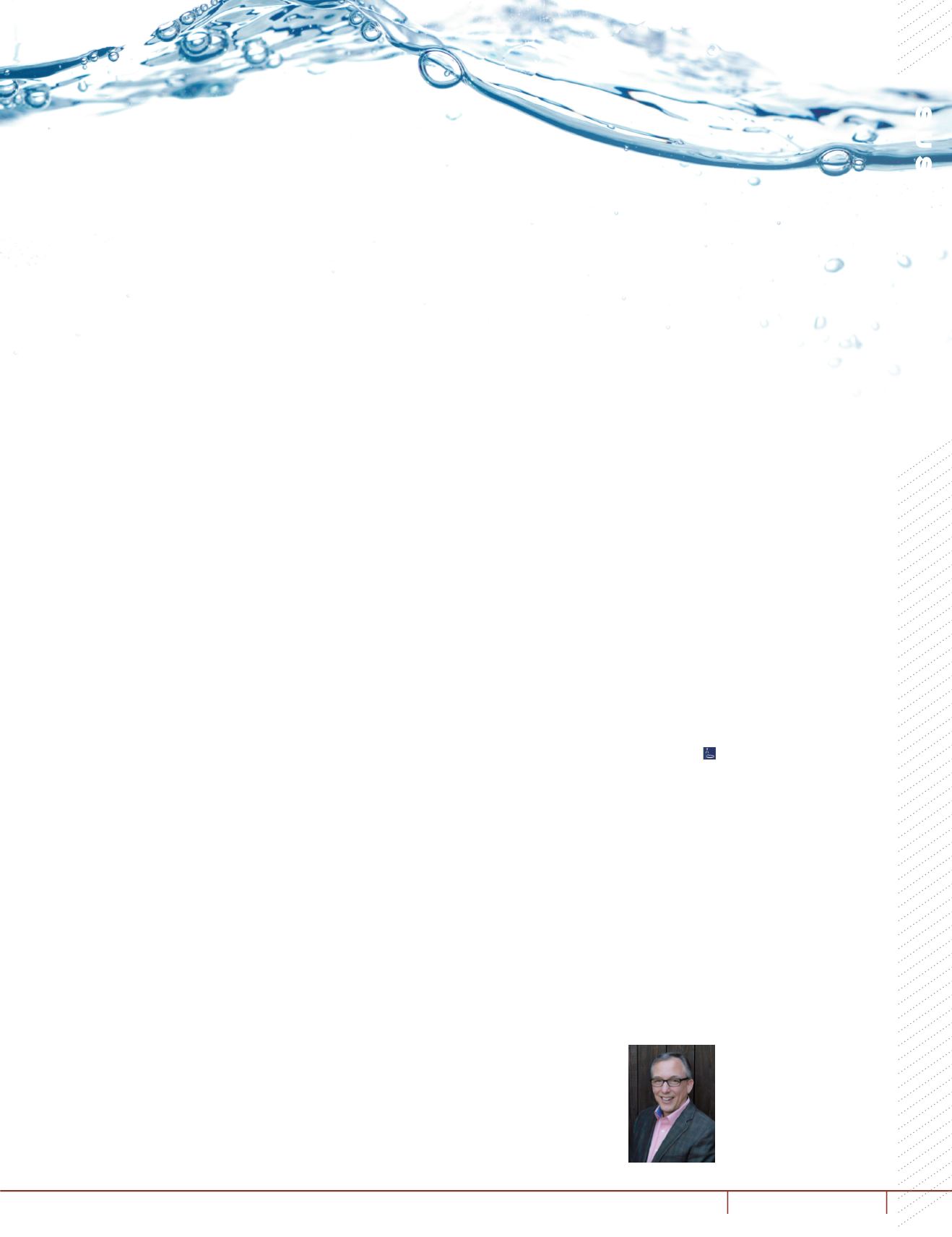
15
Winter 2014 Issue
S U S T A I
N A B I
L I
T Y
Perhaps no resource is so regularly wasted
in restaurants as water. When it’s so
commonly abundant, it’s simple to take for
granted that which is given free to guests
and used by the hundreds of gallons to cook
and clean. No one delivers it to the door on
a dolly and it doesn’t pour from faucets with
a price tag attached. Its cost is, to everyone
other than the owner, virtually abstract.
For the better part of a century water
waste was easy to justify because of its
low cost. But with the combination of
aged municipal water and sewer systems
requiring repair and the extension of water
systems to suburban locations, water costs
are escalating. In drought-stricken states
such as Texas and California, water has
become downright precious and expensive.
Thankfully, reducing water waste is fairly
simple. By monitoring overall usage, loss
through leaking pipes, faucets and toilets,
as well as waste in the dining room, water
costs can be trimmed by making minor
repairs and upgrades, as well as new staff
policies. A more detailed approach can be
taken through tracking water consumption
on a spreadsheet. (See list below for free
online tools created for this purpose.)
Want to dry up water waste in your
restaurant? Follow these simple guidelines
created by the National Restaurant
Association’s Conserve Sustainability
Advisory Committee (CCSA).
Find and Fix All Leaks
Any leak is a loss, even if it’s small, and in
a narrow margin business, no one needs
added costs. According to Richard Young,
a member of the CCSA, “Every drop of hot
water costs you in three different ways: water
in, sewer out, and water heating.” Begin by
checking every faucet in your facility, then
every toilet and every area where water pipes
are exposed. (Pot sinks and dish machines
are notorious for such leaks.)
If you’re a competent do-it-yourselfer,
consider repairing basic faucets and toilet
leaks. But if you’d rather focus your time
on the overall operation, hire a plumber.
Maintain Dish Machines
Dish machines waste hundreds of gallons
of water daily due to misadjusted, worn
or broken components. Not only does that
mean wasted water, but also expensive
sanitation chemicals that are following
that water down the drain. Commit to an
annual—or even semi-annual—inspection
from a reputable service company
to ensure your machine is operating
optimally and repaired regularly.
Use Low-flow
Pre-rinse Spray Valves
The labor required for pre-rinsing dishes
before machine washing is one cost, but
to adding to it with an inefficient sprayer
compounds the expense. An inexpensive
high-pressure, low-flow valve will provide
cleaning performance, water and energy
savings that will quickly pay for the
sprayer. According to Young, this is one
of the most cost-effective ways to save
big money in your kitchen. (Calculate
your potential water savings using the link
listed at the end of this article.)
Don’t Thaw Food with Water
Using water to thaw frozen food
compromises the quality of the flavor and
texture, not to mention that it’s wasteful.
Follow daily production and usage pars
to create a plan to thaw food safely and
inexpensively in a refrigerator, and leave
the sink free for its intended purposes.
Don’t Assume Guests
Want Water at the Table
Doubtless, it’s hospitable to bring water to
the table without asking whether guests
want it, but it’s often wasteful in more ways
than one. If guests don’t drink it, the water
and the effort to bring it is fruitless, the
ice used to chill it is lost, and those filled
glasses now must be carried back to the
dish room, emptied, washed and restacked.
To drip-drive the point home further:
According to the American Water Works
Association, if one in four U.S. restaurant
guests declined a glass of tap water, the
foodservice industry as a whole would
save more than 25 million gallons of
water annually.
The solution? Offer guests water instead
of assuming they want it. The good news
is they may prefer a beverage purchase
that boosts the check. A brief video from
the NRA noted below provides some
tableside coaching.
Systematically
Track Your Water Bills
Use a spreadsheet for this so you can see over
an extended period where your peak usage
is. Or for a more formal overall energy usage
tracking program, use the Environmental
Protection Agency’s Portfolio Manager, a
free online benchmarking program to plot
your month by month consumption listed
at the end.
Ask before you deliver:
To save on water costs,
ask, don’t assume, guests want water. Check out
this helpful video for tableside suggestions.
Waste calculator:
This will help you determine
how much water you might be wasting
Savings calculator:
Use this tool to figure your
potential water cost savings.
Consumption tracker:
Use this EPA tracker to see
your long-term water use.
Check outside, too:
Reduce your water and fertilizer
needs with smart landscaping.
Costly leaks:
This short video demonstrates the high
cost of even low water leakage.
By Steve Coomes
Contributing Writer
Water Work:
Reduce Usage and Save Costs by Using it Wisely


